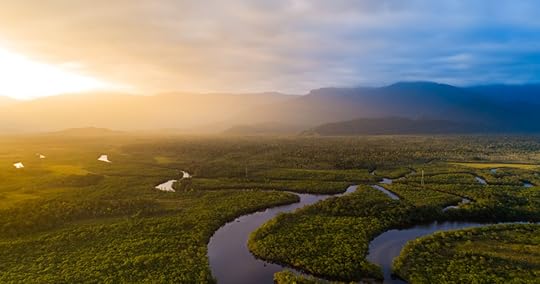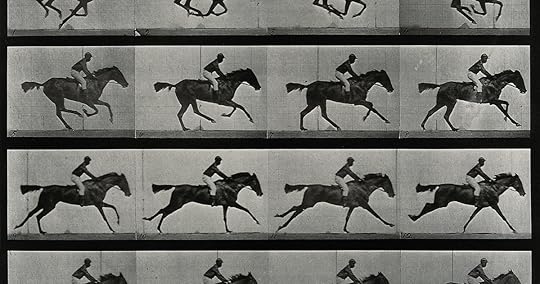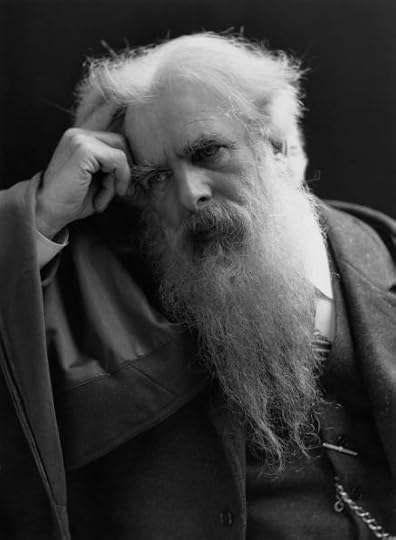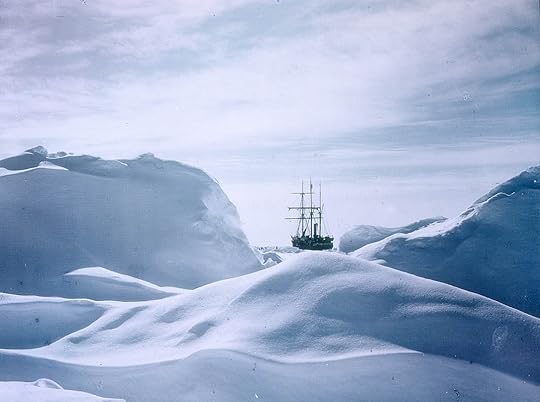Ripley Entertainment Inc.'s Blog, page 68
September 7, 2022
CARTOON 09-07-2022
September 6, 2022
Man Of The Hole: Last Member Of Uncontacted Tribe Dies
Featured in Ripley's Believe It or Not!

Technology means the inhabitants of the Earth feel closer than ever before. News gets transmitted in the blink of an eye, and people are digitally connected worldwide. Yet, there are still more than 100 uncontacted tribes in the Brazilian Amazon. In some cases, these tribes have already experienced first contact with outsiders but have chosen to cut all further ties.
Tribes choose to remain uncontacted for many reasons. Contact with civilization changes cultures in irreparable ways. It has devastating consequences as tribe members lack immunity to infectious diseases. For example, the Matis tribe lost half its rank after interactions with outsiders led to community-wide pneumonia. Moreover, some from the outside want to steal their land.
While organizations such as Survival International protect indigenous rights and property, Brazil’s uncontacted tribes remain vulnerable to disease and exploitation. This is exemplified by the story of the so-called “Man of the Hole,” who recently died.
Last Man StandingIn 1911, the last “uncontacted” Native American entered civilization for good, according to the University of California, San Francisco. Identified as a member of the Yahi tribe, he was given the name Ishi (meaning “man”) by the anthropologists who worked with him. While newspapers liked to hype him up as the “last wild Indian,” the scientists who knew him resisted such stereotypes. Instead, they characterized him as gentlemanly, affording him respect and admiration.

Ishi, 1914. Public domain.
Over the next four years, Ishi attracted hundreds of people every weekend to his home at the University of California campus in Parnassus Heights, San Francisco. They watched him participate in Yahi lifeways, from arrow-making to archery. Sadly, Ishi passed away in 1916 from tuberculosis, bringing the Yahi people and their culture to an end. The tribe’s total genocide took less than a century. You see, in the 1840s, just 400 Yahi inhabited California.
It’s incredible to think a story like this could unfold in the 20th century. But as recent news from Brazil demonstrates, some indigenous peoples in the Amazon continue to eschew outsiders while retaining their tribal lifestyles. Among these was the “Man of the Hole,” who spent a quarter of a century living in total isolation after the massacre of his tribe.
Alone in the Brazilian AmazonUnlike Ishi, the Man of the Hole wanted nothing to do with the outside world. He got his title due to his practice of excavating deep holes that he used for animal trapping and perhaps hiding. Beyond that, very little is known of his life or ethnicity. Fiona Watson of Survival International explains, “No outsider knew this man’s name or even very much about his tribe — and with his death, the genocide of his people is complete.”
Rare footage of “The man of the hole”, from Vincent Carelli’s doc Corumbiara. With his death, his people’s genocide is complete.
Other #UncontactedTribes around the
face a similar fate, but Indigenous people & @Survival are fighting to stop it.
️ © V Carelli/Corumbiara pic.twitter.com/PUS5z80hZp
— Survival International (@Survival) August 30, 2022
Despite such scant knowledge, details have emerged that point to murder and theft. As early as the 1970s, farmers began encroaching on the tribe’s traditional lands, exacerbating tensions. Within a decade, most of the tribe had been killed off by illegal ranchers who presented the tribe with gifts of sugar laced with poison. Only a few members survived the attrition.
In the mid-1990s, the last attack came from miners, wiping out everyone except the “Man of the Hole,” who retreated into the forest. Where the tribe once flourished, local authorities found evidence of indigenous croplands and homes demolished by tractors. By 1996, Brazil’s Indigenous Affairs Agency (Funai) learned that the Man of the Hole still lived.
Remote Final Resting PlaceOver the years, members of the Funai came across roughly 50 different huts that the man built and used. Each of these homes contained a ten-foot-deep pit the man carefully dug. To this day, no one knows what the significance of these excavations ultimately were. Other holes were found throughout the forest with sharp sticks in the bottom that he used for hunting.
‘Man of the Hole’: Last known member of uncontacted Amazon tribe dies https://t.co/7NtkeV12AV pic.twitter.com/p3PqeYitMZ
— New York Post (@nypost) August 30, 2022
In 1998, the 19,941-acre Tanaru Indigenous Territory was set aside to protect the Man of the Hole. This upheld Brazil’s constitution, granting indigenous people the right to own their traditional tribal lands. Funai agents came out regularly to monitor the situation and ensure that no one else threatened the Man of the Hole. At times, these agents faced repercussions and threats (likely from farmers, ranchers, and miners) for these activities. Despite the risks, Funai agents maintained a protective corridor where the last member of his tribe lived out his remaining years.
While on a routine patrol, a Funai agent named Jose Algyar found the Man of the Hole’s body. He lay in a hammock just outside his most-recent straw hut and had covered himself with red macaw feathers. According to Marcelo dos Santos, an indigenous expert, the feathers symbolize that “he was waiting for death, there were no signs of violence.” Officials estimate he was 60 years old, bringing another sad chapter to a close for Brazil’s indigenous peoples.
By Engrid Barnett, contributor for Ripleys.com
EXPLORE THE ODD IN PERSON! Discover hundreds of strange and unusual artifacts and get hands-on with unbelievable interactives when you visit a Ripley’s Odditorium!Source: Man Of The Hole: Last Member Of Uncontacted Tribe Dies
CARTOON 09-06-2022
September 5, 2022
CARTOON 09-05-2022
September 4, 2022
CARTOON 09-04-2022
September 3, 2022
CARTOON 09-03-2022
September 2, 2022
CARTOON 09-02-2022
September 1, 2022
Eadweard Muybridge: Motion Picture Pioneer… And Murderer
Featured in Ripley's Believe It or Not!

The horror/sci-fi/Western mishmash film Nope is a meditation on the first motion picture, The Horse in Motion. The footage features a Black jockey and is a recurrent theme throughout the flick, per the Insider. Without spoiling Director Jordan Peele’s latest endeavor, suffice to say the protagonists of Nope are descendants of said jockey who must capture something as ground-breaking on film as the celebrated second-by-second record of the galloping equine.
The real-life creator of The Horse in Motion was Eadweard Muybridge, a 19th-century British photographer whose own tumultuous life warrants a genre-bending movie. He survived a traumatic brain injury, his wife’s clandestine affair, and murder charges to singlehandedly create the world’s most pioneering cinematic development.
Here’s what you need to know about the eccentric bookseller turned photographer, the murder trial that rocked the West Coast, and how The Horse in Motion came to life.
Stanford’s Attempt to Get a Leg UpIn June 1878, a group of reporters sat in amazement, having just witnessed the first moving picture. Astonished, they didn’t know what to make of it, and some even declared it a hoax. Nevertheless, it captured the information Leland Stanford, the namesake for Stanford University, wanted. You see, the racehorse enthusiast had long wondered exactly how an equine’s hooves move across the ground during a race. It’s a motion that happens so quickly, the human eye can’t discern it.

Animated sequence of a race horse galloping. Photos taken by Eadweard Muybridge. Credit: Waugsberg via Wikimedia Commons
Yet, understanding how horses moved over the ground was vital to sizing up the best racehorses, and Stanford knew this. Although what he wanted to know was theoretically impossible, he approached noted photographer Muybridge anyway. Indeed, the famed photographer proved all four horse’s hooves come off the ground as they sprint, placing them in momentary flight.
But mentally processing the evidence would take time for the 19th-century journalists in the room. To them, the two-second clip looked like veritable sorcery — as if Muybridge had stumbled across the secret to making time stand still. In a sense, he had.
A Bet or a Deal?Some sources say Stanford and Muybridge placed a bet for $25,000 before settling the matter. They also claim Muybridge’s use of the camera ensured his victory. While a colorful story, most scholars doubt its veracity. But what can’t be denied are the lengths Muybridge went to in his mission to solve the horse hoof question.
He invented a pioneering photographic technology that, unbeknownst to him, would change the world forever. His innovation is especially impressive when you consider Muybridge never set out to be a photographer, let alone a progenitor of Hollywood. Instead, he worked as a bookseller in San Francisco during the epic California Gold Rush years when just about anything seemed possible. But a random event in a Texas cow town forever altered the trajectory of his career.
A Stampede Gets ’Weard in TexasIn the 1860s, Muybridge booked a stagecoach to the East Coast, part of his journey back to London to visit family. But the trip went haywire in Texas after the stagecoach’s horses bolted. He woke up 24 hours later in Arkansas to unwelcome news.
When the horses spooked, Muybridge got thrown, smashing his head and sending him into a brief coma. His attending physician predicted he’d never be same. Muybridge continued to London, remaining there for half a decade. During this time, his British family confirmed changes to his personality had, indeed, occurred.

Portrait of Eadweard Muybridge via Wikimedia Commons
By the 1870s, Muybridge returned to California, working for Stanford to capture images of horses mid-gallop. He’d come to Stanford’s attention while employed by the American government to snap photos of indigenous people. In exhibits of his work, Muybridge went by the title Helios, a reference to the Greek sun god. But nothing prepared the photographer for the task of capturing a horse’s movements. Undaunted, he delved into inventing technology capable of making time stop.
Making Time StopNineteenth-century photographers remained hampered by lengthy exposure times. Photographic technology required subjects to stay perfectly still for seconds on end. The slightest motion rendered images blurry and unfocused. Of course, this technology proved useless for capturing motion. But Muybridge had a plan.
He crafted mechanical shutters using rubber springs, wood, and a trigger. These makeshift shutters allowed him to reduce exposure times to just one-thousandth of a second. It was a tremendous leap in the right direction and one that allowed Muybridge to get to the bottom of the horse hoof controversy.
The first pictures he snapped looked like blurry disasters, but this didn’t deter Muybridge. His untiring focus on split-second development proved so obsessive that some linked these efforts to the after-effects of his brain injury. Scholars today find merit in this hypothesis of injury-induced brilliance.
A Workaholic and His Youthful BrideResearchers believe Muybridge injured his orbitofrontal cortex, the portion of the brain related to decision-making and feelings, during the Texas stampede. This diagnosis is consistent with reports of Muybridge’s capricious and highly emotional behavior post-accident. This theory might also explain how he got tangled up in the use of lethal force.
In his pre–motion-picture days, Muybridge fell head over heels for a 21-year-old named Flora, leading to a trip down the altar. An impressive 20-year age difference separated the two, but it wasn’t the generation gap that caused friction in their marriage.
Instead, it was Muybridge’s nonstop schedule as a photographer. He left his youthful bride for weeks at a time to photograph Yosemite. She soon found other ways to stay occupied.

Valley of the Yosemite, from Rocky Ford by Eadweard Muybridge
A Different Kind of ShootingThe photographer learned of his twenty-something bride’s infidelities from a photo of their son, Florado Helios Muybridge. Scrolled hastily on the back were the words “Little Harry,” which Muybridge quickly connected to a local drama critic and notorious man-about-town, Harry Larkyns. Without missing a stride, Muybridge tracked Larkyns down, unceremoniously shooting him in the chest during a card game. It was the Wild West epitomized.
Muybridge stood trial for the murder of Larkyns with uncharacteristic tranquility. His defense attorney proved unequaled in convincing the jury simultaneously that his client was both justified in killing Larkyns and not guilty by way of insanity (enter: head injury). Despite contradictions in these two defenses, the jury acquitted him.
But it was shooting of another kind that put Muybridge in the history books. Just a handful of years later, the photographer made history with his split-second stills of a Black jockey on a horse named Sallie Gardner. Put together in fast succession, these images transformed into the first motion picture, paving the way for countless aspects of our culture today, from Hollywood masterpieces to home videos and the oddly juxtaposed, though entertaining, Nope.
By Engrid Barnett, contributor for Ripleys.com
EXPLORE THE ODD IN PERSON! Discover hundreds of strange and unusual artifacts and get hands-on with unbelievable interactives when you visit a Ripley’s Odditorium!Source: Eadweard Muybridge: Motion Picture Pioneer… And Murderer
CARTOON 09-01-2022
August 31, 2022
Endurance Shipwreck Found 106 Years After Antarctic Sinking
Featured in Ripley's Believe It or Not!

Anglo-Irish explorer Sir Ernest Shackleton’s ship HMS Endurance was rediscovered in 2022 more than 100 years after it sank in the depths of the Antarctic Ocean in 1915. Even more remarkably, it was found in fairly good condition!
A crew from the Falklands Maritime Heritage Trust and History Hit found the 144-foot ship, which sunk nearly 10,000 feet down in the Weddell Sea, which is part of the Antarctic Ocean, according to CNN. The three-masted ship was positioned upright as opposed to on its side and in a “brilliant state of preservation,” commented Mensun Bound, the director of the discovery team. In footage of the Endurance, you can even read the ship’s name on the stern above a five-pointed star.
Going Down With the ShipThis ship has historical significance because it’s connected to an incredible tale of survival. Plus, it remained undiscovered in one of the world’s iciest oceans for over a century. The 2022 expedition found the ship approximately four miles south of the spot in which its captain and navigator Frank Worsley last placed it, according to the New York Times.

Credit: Endurance22 Via Wikimedia Commons (CC BY-SA 4.0)
Shackleton explored the South Pole on four separate occasions. In 1915, his crew arrived in Antarctica’s McMurdo Sound during the Imperial Trans-Antarctic Expedition. Unfortunately, they were met with solid, impassable ice around 100 miles from their destination. The Endurance got stuck, so Shackleton and over two dozen men abandoned it. The ship then drifted for a little under a year before it was overtaken by the ice.
The crew lived on the ice for five months where they stayed alive by eating seal, penguins, and their dogs. They eventually managed to make it safely to Elephant Island via floating ice floes, and remarkably the entire crew wound up surviving after spending months fending for themselves.
Several of the men, including Shackleton, then took a lifeboat a staggering 800 miles over 16 days to South Georgia Island before walking to the Stromness whaling station to seek help from a group of Norwegians..
A Sinking FeelingThe Endurance sank into the Weddell Sea, where it sat on the ocean floor for 106 years. The 2022 discovery team embarked on a mission dubbed Endurance22 to locate the ship. Members included scientists, historians, and filmmakers. They found the Endurance with the aid of Sabretooth hybrid underwater search vehicles.
The team was not surprised by the ship’s remarkable condition because it was preserved in cold water without the presence of wood-eating organisms. Damage to the mast and rigging had occurred prior to its collapse in the Weddell Sea, evidenced by photos taken by Shackleton’s photographer, Frank Hurley. The ship, which is a historical monument, will not be relocated or dismantled in order to comply with the 1959 Antarctic Treaty, which is a collaboration between 12 countries.
“We have made polar history.” Explorers and researchers, battling freezing temperatures, have located Endurance, Ernest Shackleton’s ship that sank in the Antarctic in 1915. https://t.co/EVBhJJ5StD pic.twitter.com/B8fjckUwpp
— The New York Times (@nytimes) March 9, 2022
An anonymous donor contributed over $10 million to find the Endurance. The team left Cape Town, South Africa, in February 2022 and announced their discovery in March.
Shackleton was a key figure in Antarctic exploration, and prior to setting off from South Georgia Island in 1914, he ignored whalers who cautioned him that the Weddell Sea ice conditions were treacherous, according to the American Natural History Museum. Shackleton kept exploring for seven more years after he was forced to abandon the Endurance. He died in 1921 while embarking on his fourth Antarctic expedition in which he hoped to circumnavigate the continent. He was buried on South Georgia Island at the age of 47.
By Noelle Talmon, contributor for Ripleys.com
EXPLORE THE ODD IN PERSON! Discover hundreds of strange and unusual artifacts and get hands-on with unbelievable interactives when you visit a Ripley’s Odditorium!Source: Endurance Shipwreck Found 106 Years After Antarctic Sinking
Ripley Entertainment Inc.'s Blog
- Ripley Entertainment Inc.'s profile
- 52 followers










